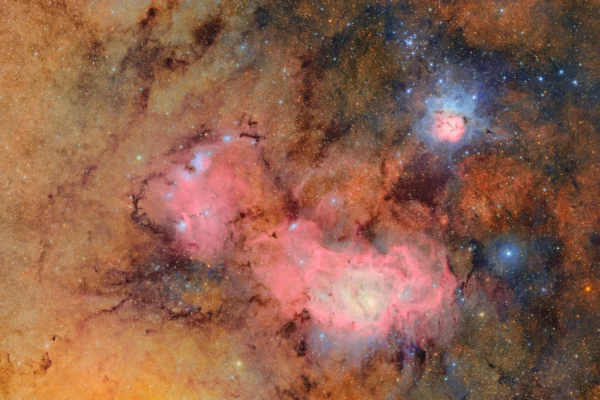The newly named Vera C. Rubin Observatory, named after the pioneering astronomer Vera Rubin, unveiled its first batch of test images on Monday (June 23), showcasing the radiance of millions of distant stars and galaxies. It also observed over 2,000 previously undiscovered minor planets, demonstrating an unprecedented scale of observation.
Located in the Cerro Pachón in the Andes Mountains of Chile, the facility, funded jointly by the National Science Foundation (NSF) and the Department of Energy’s Office of Science, has been under construction for nearly 20 years. It is expected to complete primary mirror adjustments and initiate the “first light” on July 4, marking the official start of scientific observations with the telescope.
The released images are from approximately 10 hours of test observations. Brian Stone, acting director of NSF, stated, “The Rubin Observatory will capture more cosmic information than all optical telescopes in history combined.”
The initial observations revealed stunning images. One segment of a video shows detailed structures of two spiral galaxies, then zooms out to display a grand panorama of up to 10 million galaxies (about 0.05% of the estimated total of 20 billion galaxies the observatory plans to observe). Another composite image combines 678 photos, presenting intricate details of the Trifid Nebula and Lagoon Nebula in the direction of the Sagittarius constellation, showcasing star-forming regions thousands of light years away from Earth.
During observations, the observatory also discovered 2,104 minor planets, including 7 near-Earth minor planets that currently pose no threat. Astronomers anticipate that the Rubin Observatory can detect millions of new minor planets within the first two years of operation, surpassing the current annual discovery rate of around 20,000 by existing telescopes.
This capability is attributed to its unique mirror design, sensitive light components, and high-frequency scanning technology, enabling continuous imaging of the night sky to track changes in brightness, detecting celestial bodies that are difficult for the naked eye to perceive and potential Earth impactors.
The core mission of the observatory, the Legacy Survey of Space and Time (LSST), is scheduled to commence 4-7 months after the first light, scanning the southern hemisphere sky every few nights over the next decade to create time-lapse images of dynamic changes such as comets, supernovae, and galaxy evolution.
Yusra AlSayyad, Deputy Data Management Director of the Rubin Observatory, stated that the images exhibit the telescope’s “ultra-wide field of view” and high resolution. Project scientist Dr. Sandrine Thomas pointed out, “Its field of view and imaging cadence make the night sky look like a real-time movie.”
Director Zeljko Ivezic added that a single image covers an area equivalent to 45 full moons and would require 400 high-definition TVs side by side to fully display. The observatory’s official website also offers interactive features, allowing users to zoom in and explore these “cosmic treasures,” and even using sound technology to “hear” signals from the stars.
The Rubin Observatory is named after the late astronomer Rubin, who first provided evidence for the existence of dark matter. NSF Acting Director Stone emphasized that the facility will help humans explore the dark matter and dark energy in the universe that cannot be directly observed, unraveling their mysteries.
(This article referenced a report by CNN)

